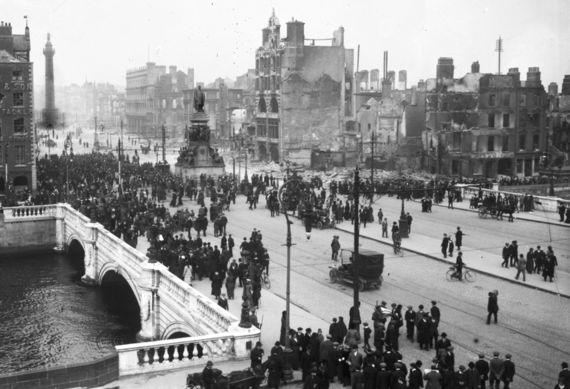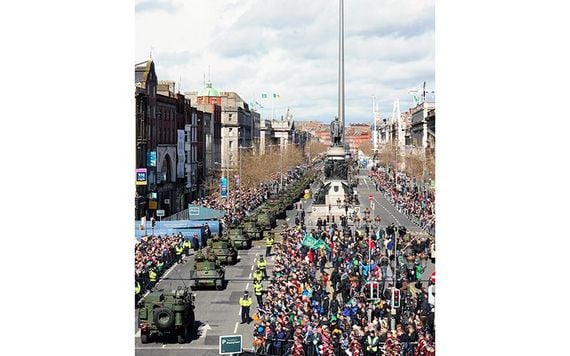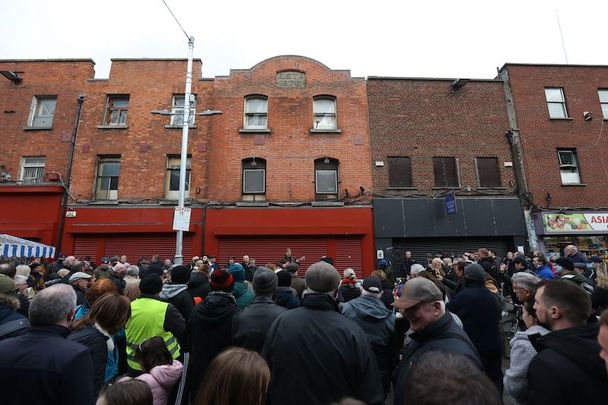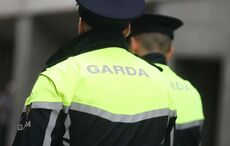Due to the time lapse in the start date, officials will have to seek new government consent to move forward with the 1916 Easter Rising museum located in houses used during the rebel leader's retreats.
According to reports by the National Monuments Service, Ireland's Office of Public Works, an Irish Government agency, that manages most of the Irish State's property portfolio, has said it must seek new government consent to move ahead with the plans for a museum on Moore Street, in Dublin city center, dedicated to the Easter Rising 1916. The OPW say it's "difficult to be specific about when work will start on site."
The houses at 14–17 Moore Street are historically significant due to their key role in the final days of the 1916 Easter Rising. After the surrender of the General Post Office (GPO) on O’Connell Street, which had served as the headquarters for the leaders of the Rising, the surviving rebel leaders and their forces were forced to retreat. They made their way to Moore Street, using the terrace of buildings as cover.
The museum, part of the National Monuments Service, was due to open initially in 1916 for the Easter Rising's centenary anniversary. Work on the 1916 museum was set to begin in 2023 with an estimated cost of €16.25 million ($17.95m).
However, the Irish Times reports that no contractors have been engaged to commence work, by the OPW.
An update provided by the Moore Street advisory group provided this week says the OPW would need to seek fresh “ministerial consent” from the Minister for Heritage, due to the passage of time, the Times reports.

O'Connell Bridge, in Dublin, in the aftermath of the 1916 Rising.
They stated it would be "difficult to be specific about when work will start on site”.
“Currently, they [the OPW] plan to apply to the Minister for a Ministerial Consent under the National Monuments Act in September and will hope to go out to tender as early as possible in 2025,” the update from the Monuments Service, which is under the aegis of the Department of Heritage said. “It should be stressed that these are estimates only.”
Green Party Dublin City Councillor Donna Cooney told the Times she'd expected construction to begin last year.
Cooney said “It appears to have taken more than a year just to decide that a new ministerial consent is needed when we thought work would be well underway by now. It’s nine years since the State purchased this national monument and each year we lose more Moore Street campaigners, elderly people who will now not see the center opened.”
The buildings, 14 to 17 Moore Street, were named as a national monument in 2007. This was opened to the public and was approved by An Bord Pleanála (the planning board) in 2010.
The houses were bought by the Irish State in 2015. Minister for Heritage, Heather Humphreys, said at the time the buildings were a "very important element" of the 1916 centenary plans of 2016.

The Easter Rising parade in 2016 in Dublin.
Shortly after relatives of the Easter Rising participants took legal action. They asked that most of Moore Street be given national monument status, not just 14 to 17. Several houses on the road were due for demolition and a shopping center was to be built.
In 2016, Justice Max Barrett suspended works on the buildings including the 1916 museum. In 2018, the Court of Appeal overturned this ruling. The then minister for heritage, Josepha Madigan, said the opening of the museum would be a “top priority”. In December 2019 her department said they were “not as yet in a position to say when the project will get underway”.
In July 2024 the Moore Street Preservation Trust met with the Dublin inner-city task force and presented to the chairperson, David McRedmond, a master plan for transforming Moore Street into a cultural quarter.
The great-grandson of James Connolly, an Easter Rising leader, told the Irish Independent
“This was a constructive meeting,” James Connolly Heron said.
“Our architect Seán Ó Muirí outlined the Moore Street Preservation Trust’s Master Plan.
“We believe the plan has the potential to transform this area, preserving our history and creating a vibrant focus for the north inner city.
“We emphasized the need to cherish both the 1916 Rising heritage and the street trading tradition of Moore Street.
“Mr McRedmond engaged constructively, and we look forward to these issues being positively reflected to the Taoiseach in the Task Force’s report and recommendations.”
14 - 17 Moore Street's importance
These houses were the last headquarters of the 1916 Easter leaders. After evacuating the GPO, key leaders of the Rising, including Patrick Pearse, James Connolly, Joseph Plunkett, Tom Clarke, and Seán Mac Diarmada, sought refuge in these houses. They moved through the buildings by tunneling through walls to avoid sniper fire from British forces.

Easter Rising Leader Padraig Pearse surrenders.
It was at 16 Moore Street that the leaders of the Rising held their final council meeting to discuss their next steps. With dwindling resources, heavy casualties, and civilian suffering, they concluded that surrender was the only viable option.
Patrick Pearse, the leader of the rebellion, drafted the formal surrender order at 16 Moore Street. The following day, on April 29, 1916, Pearse left from this location to surrender to the British forces.
These buildings are considered some of the last surviving physical remnants of the 1916 Rising, making them a crucial part of Ireland's national history.




Comments